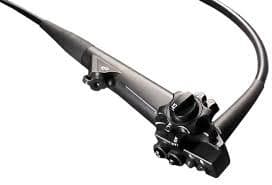 Because endoscopes are reusable medical instruments, one of their biggest risks is the very real possibility of passing diseases to patients through contact with inadequately disinfected scopes. Though the risk of passing diseases through scopes is relatively low, the danger is always there, especially when high-level disinfection (HLD) protocols aren’t closely followed. One area where many healthcare providers fall short is in the drying of endoscopes following HLD.
Because endoscopes are reusable medical instruments, one of their biggest risks is the very real possibility of passing diseases to patients through contact with inadequately disinfected scopes. Though the risk of passing diseases through scopes is relatively low, the danger is always there, especially when high-level disinfection (HLD) protocols aren’t closely followed. One area where many healthcare providers fall short is in the drying of endoscopes following HLD.
Several guiding bodies, from the US Food & Drug Administration (FDA) to the Society for Gastroenterology Nurses and Associates (SGNA) have put out guidance stating that endoscopes must be properly dried following HLD before contact with the next patient. While the concept is simple and widely-understood in theory, it is not always adhered to in practice. One of the major reasons is that many busy Endoscopy centers don’t allow enough time from when scopes are unloaded from Automated Endoscope Reprocessors (AERs) to their use in a procedure. In situations like these, not allowing a scope to properly dry internally and externally increases the potential for disease transmission. Additionally, not allowing scopes to hang vertically to allow any moisture to drain properly post-HLD can allow moisture to build up inside the scope.
Though there is some conflicting guidance, many studies have shown that wet or moist endoscopes carry much higher risk of harboring bacteria than dry ones. One such study from Lawrence F. Muscarella, Ph.D. strongly suggests that endoscope drying should take place after every reprocessing cycle due to the threat of transmission of waterborne bacteria in damp endoscopes (Muscarella, L. F. (2006). Inconsistencies in endoscope-reprocessing and infection-control guidelines: The importance of endoscope drying. American Journal of Gastroenterology, 101(9), 2147-2154). Without this crucial step, it has been widely published that moisture build up within an endoscope can lead to extremely higher rates of bacteria growth.
There are systems on the market that can help staff adhere to basic drying procedures such as blowing filtered air through channels and having scopes hang vertically in storage. One such system is iRIScope from Mobile Aspects, which was introduced in the last several years to guide healthcare providers through the proper, society-recommended HLD protocols every single time. With iRIScope, sterile technicians will be guided through the entire HLD process to make sure that any potentially harmful diseases are minimized via proper HLD techniques. The system also includes smart storage cabinets that allow scopes to hang vertically with forced air running through the channels. Built-in technology will even alert your staff if improperly reprocessed scopes are hung in storage, or if it’s time to re-disinfect a scope based on local protocols. With a second pair of eyes on your scopes at all times, you can ensure that patients are kept safe while simultaneously following society and Joint Commission guidelines.
